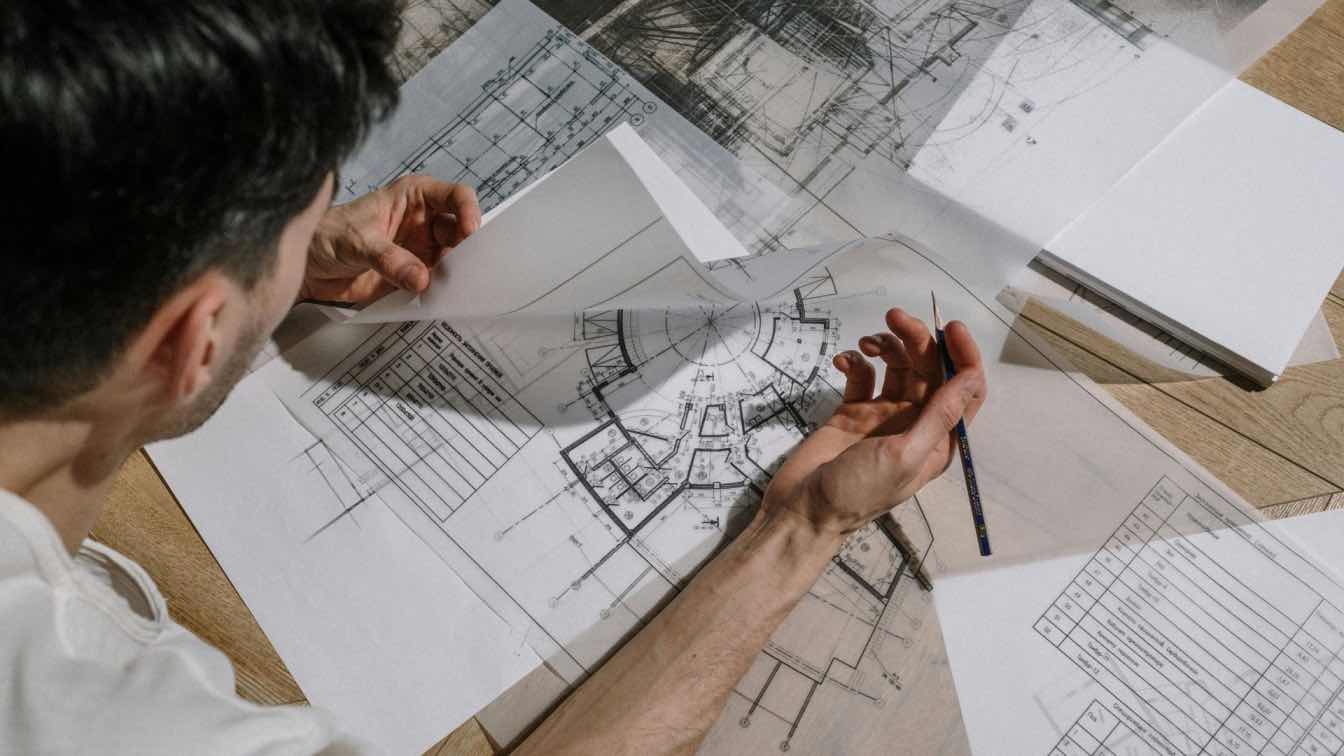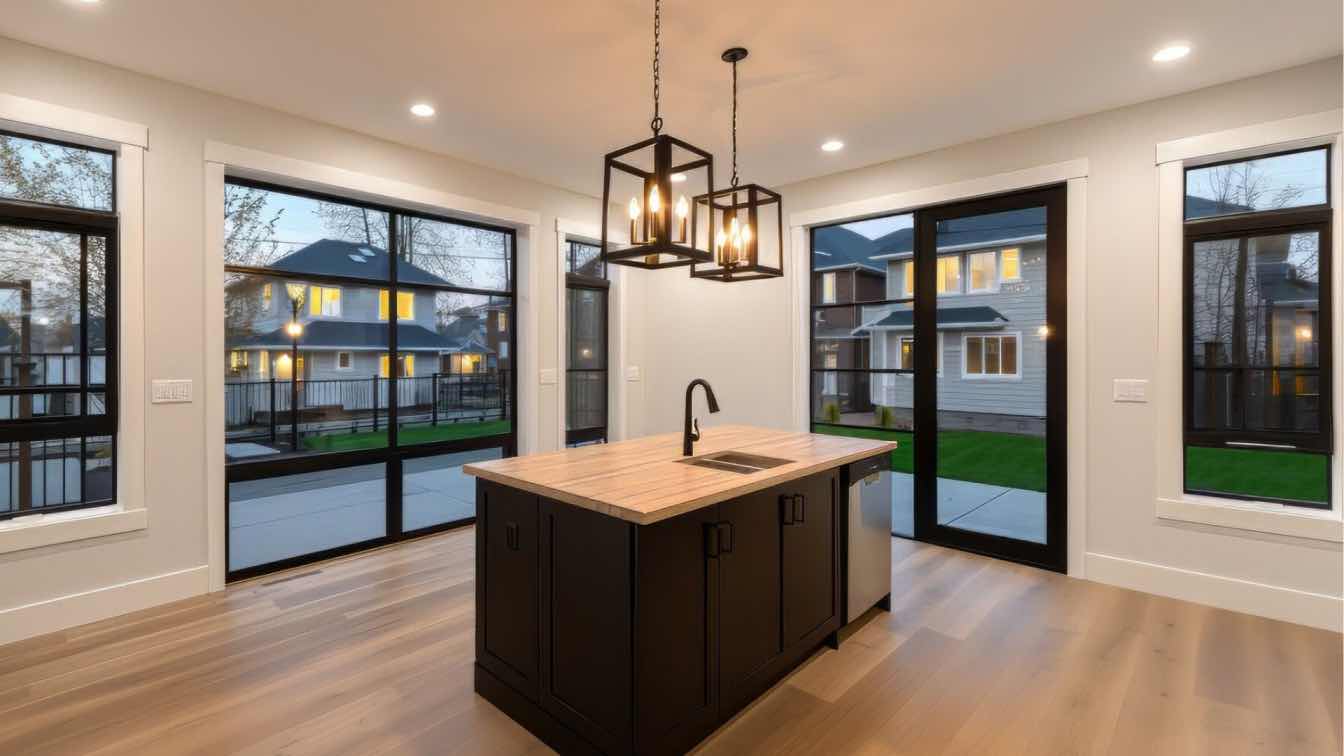In architecture, the success of a project depends on balancing beauty with function, ensuring costs align with budgets, and maximizing value at every stage of development. Financial analysis helps pinpoint inefficiencies, make data-driven decisions that enhance project efficiency, and empowers you to identify areas where value can be added without increasing costs.
Whether you’re designing for commercial, residential, or public projects, understanding the financial dynamics can set you apart. Financial missteps can also harm your reputation and diminish stakeholder trust. Integrate financial insights early to ensure a seamless process from conception to completion.
Photo by Tima Miroshnichenko on Pexels
The Role of Cost Estimation in Architecture
Cost estimation includes projecting the financial requirements for labor, materials, and other expenses. Without an accurate cost estimate, your project risks running into unforeseen expenses that can derail its success.
It provides the framework for allocating resources efficiently and avoiding unnecessary waste. Additionally, it helps in identifying areas where strategic compromises can maintain quality while staying within budget.
Breaking Down Material Costs
Material costs often take up a significant portion of your budget. By carefully selecting materials, you can control costs while maintaining quality.
1. Leverage local suppliers to further reduce transportation costs and support sustainability efforts.
2. Stay updated on market trends anticipate price changes and plan accordingly.
The Importance of Labor Projections
Labor costs can fluctuate based on location, project complexity, and labor market conditions. Conducting detailed labor cost analyses helps you plan for potential delays and adjust your timelines accordingly. Accurate projections also facilitate better workforce management and prevent project bottlenecks. Monitoring labor market conditions can give you an edge in negotiating competitive rates.
Accounting for Contingencies
Every project carries uncertainties, whether it’s unforeseen site conditions or price fluctuations. Allocating a portion of your budget to contingencies provides a financial buffer. This safeguard ensures that unexpected challenges don’t compromise the project’s quality or timeline. Regularly reviewing contingency allocations can also help refine your budget over time.
Risk Management Through Financial Analysis
Architectural projects are inherently risky, involving multiple stakeholders, regulatory requirements, and market pressures. Financial analysis allows you to identify and mitigate these risks early in the process. It creates a proactive framework to address potential setbacks before they escalate.
This approach reduces the likelihood of project delays and cost overruns. Scanning invoices can streamline documentation and approval processes, further minimizing delays and ensuring accurate record-keeping.
Evaluating Market Feasibility
Market feasibility studies are essential for understanding whether a project is financially viable. By analyzing demand, competitive pricing, and economic trends, you can align your project with market needs. These insights help you tailor your design to meet consumer expectations and maximize profitability. Informed market decisions also enhance the long-term viability of your project.
Identifying Regulatory Costs
Compliance with building codes, zoning laws, and environmental regulations often involves additional expenses. Financial analysis helps you account for these costs upfront. It also enables you to plan for permitting timelines, avoiding delays that could disrupt schedules. Proactively addressing regulatory expenses reduces stress and ensures smoother project execution.
Preparing for Economic Shifts
Financial analysis includes evaluating how factors like inflation, interest rates, and supply chain disruptions may impact your budget. Staying informed about economic trends allows you to adjust your strategies and remain competitive. This foresight ensures your project remains resilient in fluctuating market conditions.
Maximizing Value Through Budget Optimization
Optimizing your budget is about using available resources without compromising quality. A well-structured financial analysis helps you identify areas for savings and reallocate funds to enhance project value. It also helps focus on long-term gains rather than short-term cuts that could affect performance. This balanced approach ensures both efficiency and effectiveness.
Prioritizing High-Impact Features
Not all design elements contribute equally to a project’s success. By analyzing the financial impact of different features, you can prioritize those that deliver the most value. This enables you to focus on elements that improve functionality and user satisfaction. Prioritization also allows for better resource allocation to areas with the greatest return.
Leveraging Value Engineering
Value engineering is a systematic approach to improving project value by examining functions and costs. This process allows you to reduce expenses without sacrificing performance. It often uncovers innovative solutions that enhance the overall design. Effective value engineering also boosts stakeholder confidence by demonstrating fiscal responsibility.
Streamlining Project Phases
Efficiently managing your project phases—from design to construction—reduces overhead and accelerates timelines. Financial analysis helps you identify inefficiencies and implement strategies to eliminate them.
Pinpoint recurring expenses or redundant costs that may go unnoticed with invoice scanning software for better budget allocation and enhanced financial transparency. This improves project outcomes while minimizing resource waste. Additionally, streamlined processes contribute to a more predictable and manageable workflow.
Collaboration and Stakeholder Communication
Clear communication minimizes misunderstandings, promoting a smoother project experience—when stakeholders feel informed, they are more likely to support your decisions.
For example, financial jargon can be intimidating to stakeholders who lack a background in finance.
1. Present financial data in an accessible way to help others understand the implications of design decisions.
2. Simplify data to foster transparency in maintaining stakeholder trust—it also encourages active participation and more productive discussions.
Aligning Stakeholder Expectations
Stakeholders often have diverse priorities, from aesthetic considerations to financial returns. Financial analysis allows you to align these expectations by demonstrating how your design choices impact costs and outcomes. This alignment builds a shared vision and promotes a unified approach to project success. It also minimizes conflicts by providing clarity on trade-offs.
Mitigating Disputes
Misunderstandings about costs or budgets can lead to disputes. A transparent financial analysis minimizes these risks by providing a clear, objective basis for discussions. This reduces delays caused by disagreements and keeps the project on track. Proactive dispute mitigation fosters a collaborative and solution-oriented environment.
Long-Term Financial Performance
The financial impact of an architectural project doesn’t end at completion. Long-term performance plays a significant role in determining its ultimate success. Financial analysis helps you design with these future considerations in mind. It ensures your projects remain relevant and valuable well into the future.
Lifecycle Cost Analysis
Understanding the lifecycle costs of a building—including maintenance, repairs, and energy consumption—ensures sustainable financial performance. By factoring in these costs during the design phase, you create structures that remain cost-effective over time. This approach also reduces the environmental impact by promoting efficient resource use. A well-planned lifecycle analysis can save substantial costs in the long run.
Enhancing Return on Investment
Whether your project involves commercial buildings or residential developments, enhancing return on investment (ROI) is crucial. Financial analysis enables you to identify opportunities to increase revenue streams, such as through flexible spaces or energy-efficient features that reduce operational costs.
Higher ROI attracts more stakeholders and future investment opportunities. It also strengthens your portfolio by showcasing financially successful projects.
Planning for Adaptive Use
Financial analysis helps you evaluate the cost-benefit ratio of creating flexible spaces that can be repurposed in the future. This strategy adapts to changing market demands and improves the building’s long-term utility. Adaptive design also reduces the need for costly renovations down the line.
Conclusion
Manage complexities of design and construction with confidence by integrating cost estimation, risk management, and value optimization. It also provides a framework for aligning creative aspirations with practical considerations.
Your ability to align financial realities with architectural aspirations determines the success of your projects. By mastering financial analysis, you’ll not only deliver exceptional designs but also maximize outcomes for stakeholders. This approach builds a reputation for excellence and ensures sustained success in a competitive field. Embrace this method, and you’ll redefine what architecture can achieve.





